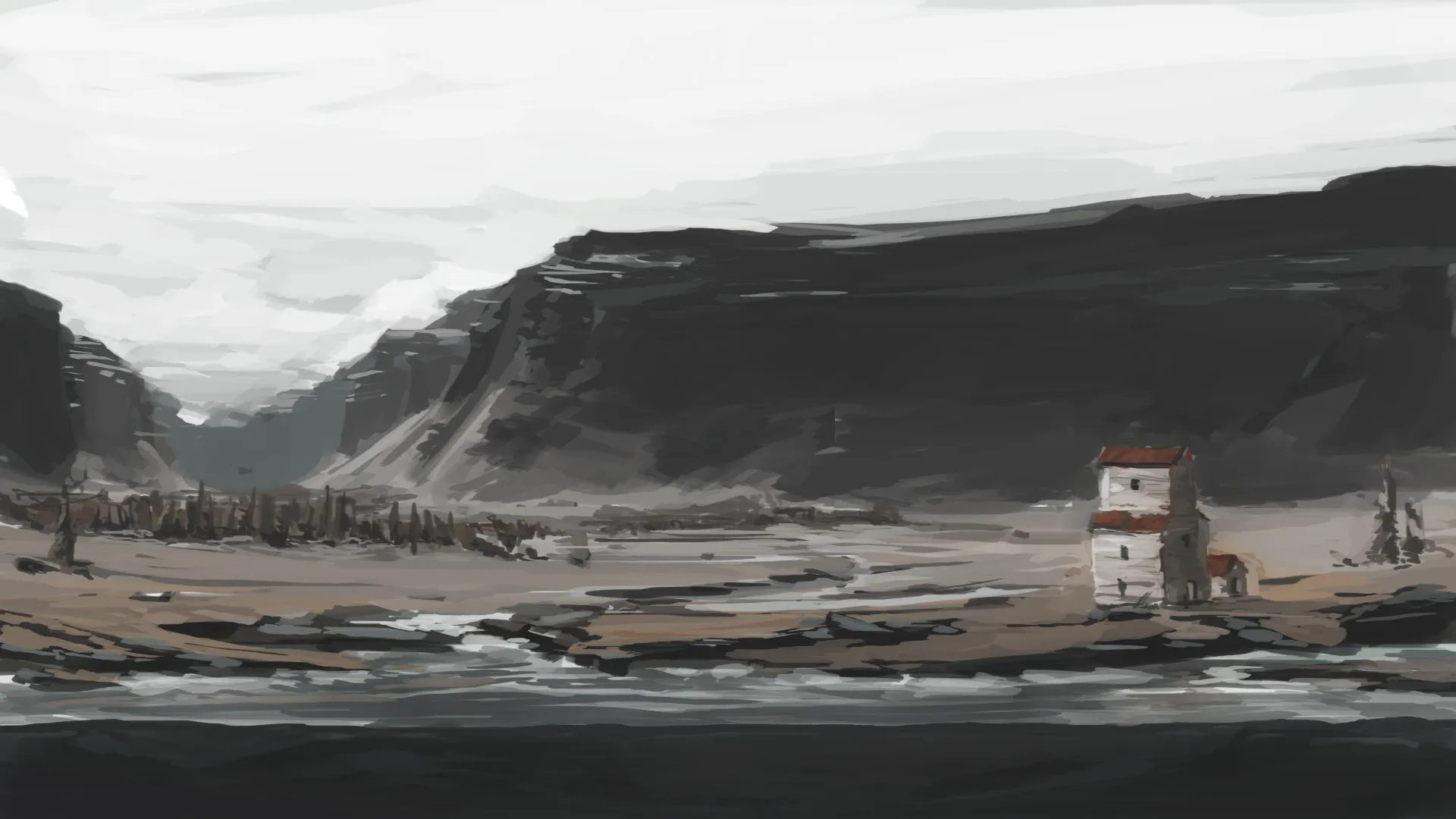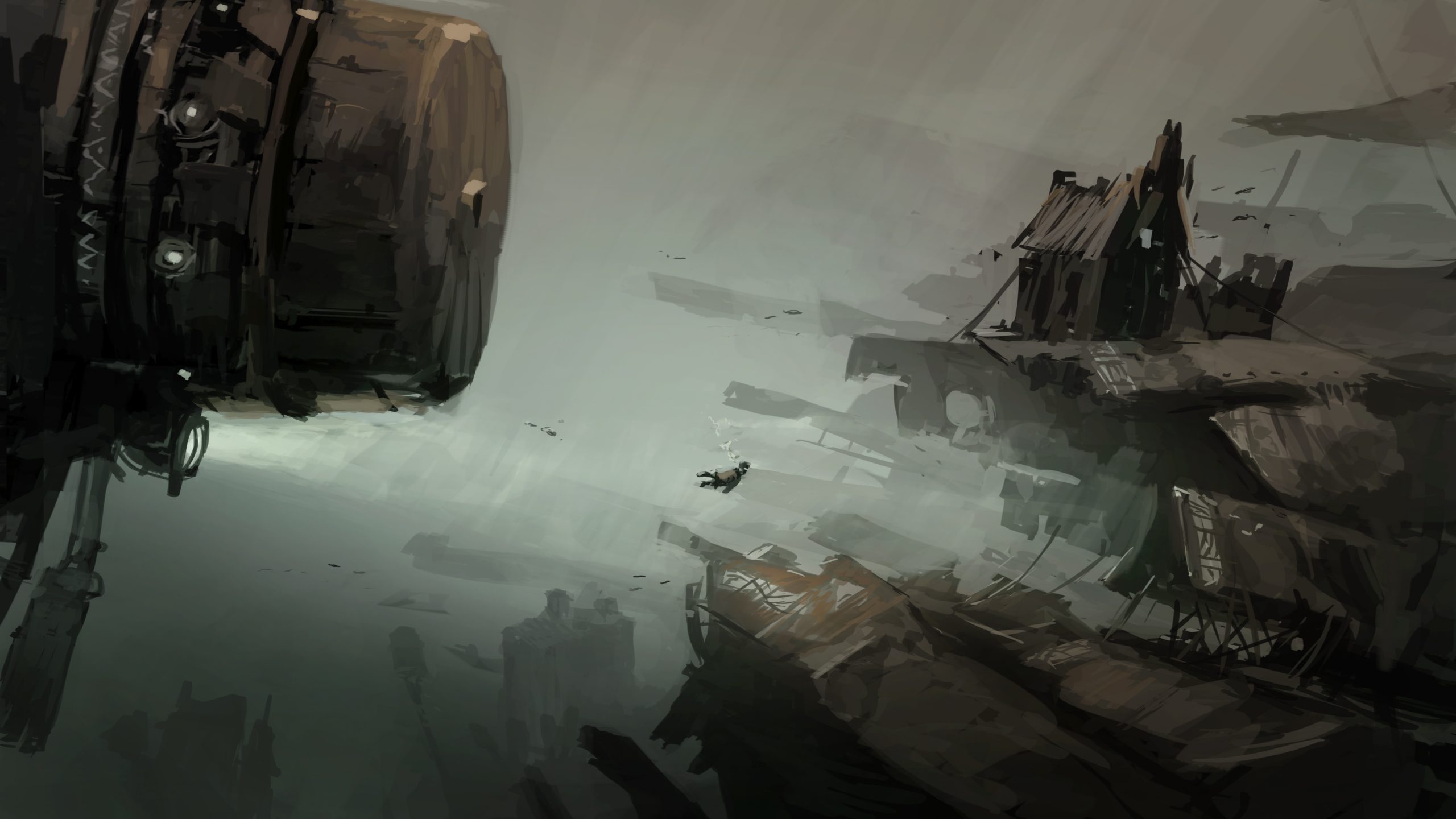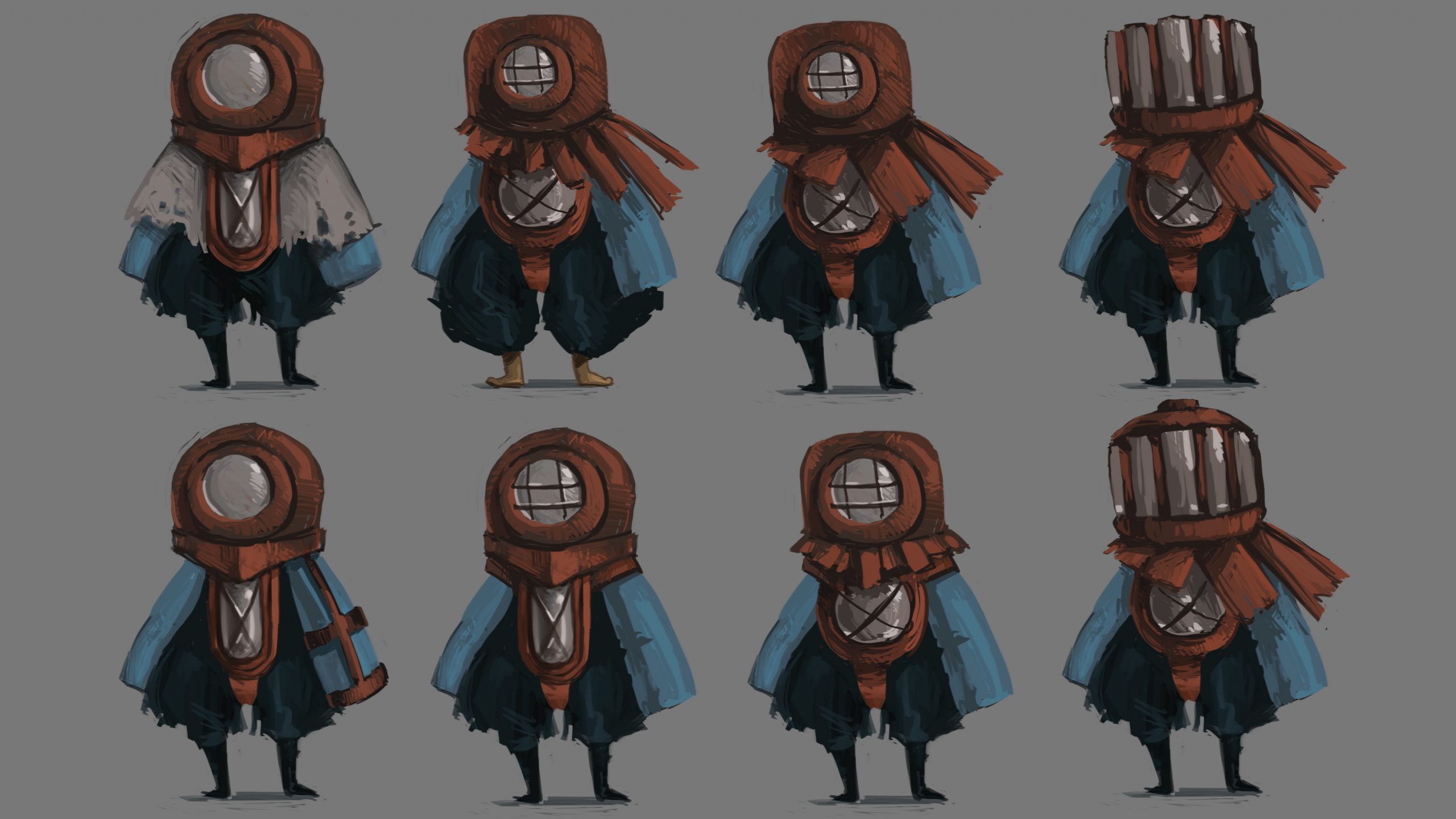Behind the Art of FAR: Changing Tides

FAR: Changing Tides is the second title in the FAR universe created by Okomotive. Unlike the first FAR game’s (Lone Sails) dried-out seabed setting, Changing Tides takes place in a flood-ravaged world. Players will take on the role of Toe, a young boy who is navigating this ocean with his ship on the hunt for a new home.
We had the opportunity to speak with Okomotive Co-Founder and Creative Lead Don Schmocker about the changes this new watery setting brought to the game. Don gave us a special look into how the art of FAR plays a key role in making a memorable player experience.
At the end of the interview, you’ll also find a special collection of behind-the-scenes concept art from FAR: Changing Tides!
Some people might be surprised to know that the first game in the FAR series, FAR: Lone Sails, began as your personal thesis project. What has it been like seeing your team and IP grow?
I’m happy that I get asked this question because it’s not something I usually think about during the day. I’m either very focused on the contents of the game or I’m happy that we are able to work in our studio with our team. But thinking back over the previous six years, our team has grown from one to ten people, we changed our office space many times, and we experienced a lot of cool things together. I’m very proud of where we are now. It happened gradually and everyone in the team helped carry us when the times were more difficult or very stressful.
In terms of IP it’s interesting that game design and story choices I made six years ago in a few minutes are still very much a part of FAR: Changing Tides.
The FAR games have almost no text in them. How challenging is it to communicate information and direction to players without dialogue? How do your different creative and technical team members collaborate on this?
In both games, we wanted to give the player the chance to figure out how the vessel mechanics work without explaining everything. Even if this approach is a bit risky because the mechanics are not so simple sometimes, the feeling afterward can be very rewarding and strengthens the bond with the vessel. The environmental storytelling in the game works similarly, as it aims to create a connection to the world. In both cases we introduce the player step-by-step to new information throughout the game. We didn’t want to have a tutorial level so we teach each mechanic in an isolated context in our obstacle areas.
It also helps that the interactions with the machines work in a visual way and it builds on knowledge from outside the game. For example, the player has to jump on a bellows to blow air to the fire before it extinguishes.

How has the visual style you introduced in Lone Sails changed or stayed the same? Are there new major themes that you’re exploring?
The ship interior has a lot more depth. We wanted to create a more believable and three-dimensional space with individual rooms and exterior areas where the player can enjoy the view. The water was a big challenge when we defined the aesthetic for the game as we wanted to have many different moods on the water: quiet lakes, rivers, big storm waves, deep dark waters, and beautiful sunsets. Variety for water meant that we had to have different colors, grades of reflectivity, and transparency. This in turn meant that the colour scheme changed from location to location, so we had to work with a lot more colors than in FAR: Lone Sails which made designing the environment much more difficult. But in the end I’m happy we did that, because we now have a lot of beautiful and surprisingly colorful scenes in the game.

Besides the water, we had the challenge to create two different design languages for the civilisations in the game. There are the people from the city where you start with more traditional European architecture; then there are the building ruins you can find along the way that are a mix between industrial structures and ancient monuments. It was important for us to differentiate these two to tell the story to the player and to communicate the history of the game world. And because we have almost no text, the design of the structures and objects had to tell a lot.

Another new element is the underwater areas. Creating those was definitely something I underestimated. We knew from the beginning that we couldn’t fill every place underwater with a high density of objects and designed spaces. We had to find a good mix between more open spaces, high density points of interest where the player is guided towards things, and also some nice places here and there to reward the exploration attempts. Putting everything into darkness would have helped, but we wanted the underwater areas to feel open and have depth in the background to create an immersive space that’s not just uncomfortable and claustrophobic. Not saying that we don’t have those places in the game.

One thing that was important all around the art department was to design and create assets with their purpose and context in mind. This sounds like a broad statement, but because our game camera is quite far away most of the time, many objects don’t need to have the level of detail you would initially expect. And because we had to create a lot of assets we all had to learn how much time to put into the production of an asset. Sometimes it felt unrewarding to not bring each individual thing to a satisfying level of detail, but when everything came together in the scene, the final combination of assets, effects, and lighting worked very well.
FAR: Changing Tides will launch early 2021. It is available to wishlist on Steam here. To follow the game’s development, you can follow FAR on Facebook, Twitter, and Instagram.
Far: Changing Tides Concept Art
Backgrounds















Constructs





Ship



Toe
























